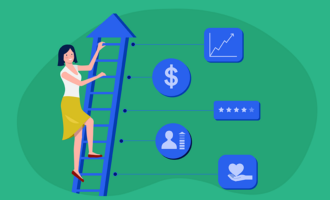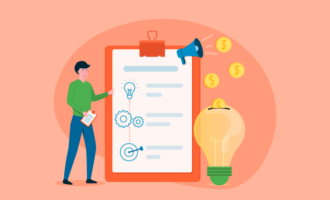Not all challenges are the same for every small business, but there are some common obstacles that hit a business when it goes through the five stages in the business model life cycle.
Knowing these challenges can help business owners like you maintain cash flow and increase market share throughout the company life cycle — from launching a new business to strategizing expansion to addressing a mature market.
Early-stage challenges
Seed stage
Some of the hardest challenges for new business owners who are just fleshing out their ideas are creating profitability and sustainability.
That’s why a business plan is so critical even before you enter the startup stage. The plan contains research about the customers who would benefit from the business idea and includes what problems the business solves for those users and why the business offers value.
The business plan also includes a research-backed time line that gauges how long it may take to reach profitability. And it outlines marketing tactics that can help sustain business growth.
Startup stage
During this stage of the business life cycle, challenges include funding, money management, and market presence. You need cash to launch your business, attract new customers, and generate revenue. Money often determines which strategies you can execute in the early stages of your business.
Your business plan serves as a tool to attract investors and show them specific reasons why they’ll get their return and when. It describes new customers, their pain points, and how your unique product or service offers a solution. The business plan also describes the distribution channels and marketing strategy that target these ideal customers.
By adding a budget to your business plan, you can define how you plan on spending money from investors. You’ll better understand where the money should go by aligning spending with the tactics in your business plan.
Growth stage
Now that the business has market acceptance, it’s time to capitalize on that momentum and gain a larger market share. During this growth phase, you’ll face several challenges, including how to handle revenue, develop customer relationships, and scale operations efficiently, especially if you experience rapid growth.
Sticking to a budget helps you get the most out of your revenue so you can maximize profitability. From there, focus on using available funds to add technology that will increase efficiency and productivity.
This is also a good time to consider hiring additional talent. New hires can be instrumental in creating and implementing business development tactics that help engage existing customers and deliver critical information to personalize those relationships.
Later-stage challenges
Expansion stage
At any time through the various stages of the business, you may feel successful. But you may never feel quite as successful as when you’re ready to expand.
At this point, you’ll still face challenges, such as more competitive pressure. You may also have to address questions about the product life cycle — how to move into new markets or services. It’s worth pursuing your existing customer base while attracting these new audience segments.
Research the competition to help address the growing pressure they may represent. Does the competition offer the same product or service? Are they encroaching on your customer base through price, service, or something else?
The answers to these questions can help you determine if your pricing strategy needs to change or your service experience needs to improve. Maybe it’s time to develop a new product or service to address the audience’s other pain points.
During the expansion stage, it’s important not to forget about your loyal customers. Spend time deepening your relationship through surveys and conversations.
The data you collect can help customize campaigns and personalize the service experience. Your customers can serve as brand ambassadors to introduce you to new markets and audience segments.
Maturity stage
Some call this the decline stage of the business life cycle, but it doesn’t always involve a decrease in business activity or success. Challenges during the maturity phase include continued competition, uncertainty about adding new products or services, and questions about how to develop an appropriate exit strategy for your business.
To address these challenges, continue the competitive research you started during the expansion stage of the life cycle. Measure the benefits and risks of introducing a new product or service at this stage in the business.
In certain instances, you may discover your audience has a new problem you can solve. Then, it’s a good idea to invest in product or service development. Otherwise, you might consider whether new features can be added to your existing offering.
Finally, think about how you might approach leaving the business by merging with or selling to another organization. Your ambition and optimism might lead you to go public or raise more funding for new products or services. Or it may be time to close the business and start something entirely new.
Many business challenges but just as many solutions
Though your company will face challenges throughout its lifecycle, there are solutions that can help you move past them to grow, expand, and succeed. Preparation, hard work, thoughtful business decisions, and effective management will carry any careful founder from a promising idea to a successful business.





























Send Comment: